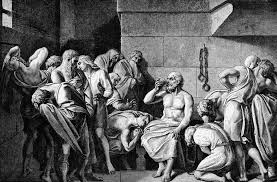These three disparate items have a common characteristic. They are all produced by people to create profit. If production is halted by a strike corporate profit is diminished. In addition, strikers withholding sweat, and therefore product, may even cause family hardship as strikers don’t get paid. This may make sense and demonstrate commitment related to producing commodities.
Teaching is different.
No product is produced in a teaching environment. Aspirations aren’t canned. Dreams might be fulfilled, knowledge and insight transferred, but no tangible product can be legitimately held for ransom. Nothing from a student loan can be repossessed.
This is the nature of the teaching and learning enterprise.
Unions are dedicated to protecting faculty, but students are left out in the cold. Students are people to be ministered to; holders of hope — not coal, steel, or cars. In a twist of fate, teachers in unions become customers; they pay union leadership for services. The criticism of many faculty that universities are treating students as customers is self-inflicted. Only faculty can “treat” students.
Albert Shanker, former President of the American Federation of Teachers, purportedly said, When school children start paying union dues, that’s when I’ll start representing the interests of school children. The Albert Shanker Institute suggests that what Shanker actually said was something more like this, I don’t represent children. I represent teachers… But, generally, what’s in the interest of teachers is also in the interest of students. Who Knows? Either way students are relegated to steerage.
In a shared governance environment not overpowered by collective bargaining (the two are dissimilar in all ways) faculty should participate in leadership.
Faculty participate, either directly or indirectly, in admissions processes intended to build enrollment at any cost. Then, in order to serve unprepared students, remedial courses are required and paid for at the same rate as all “real” courses by students and families, frequently through subsidized loans. Most of these courses should have been completed in high school and paid for by local school taxes. The cycle is rationalized and perpetuated by lenders, government, unions, and campus leaders, all on the backs of students. They perpetuate this charade under the auspices of giving the students a chance. Faculty who are supposed to control curriculum passively watch.
Faculty participate, either directly or indirectly, through university chieftains, minions, and union leaders in blaming government for all educational failings. If resources lead to quality, I would join the chorus of complaint. However, resources do not necessarily lead to quality, but quality endeavors always attract resources. Remember Ralph Waldo Emerson’s reflection, “If a man can write a better book, preach a better sermon, or build a better mouse-trap than his neighbor; though he build him a house in the woods, yet will all the world make a beaten path to his door.” Politics may affect education, but blindness, mindlessness, and tepid or nonexistent innovation diminishes political machinations from a cause to a sideshow. Faculty and leaders should demand thoughtful innovation in ministration to students rather than claim victimhood at the hands of the legislature.
Faculty members, either directly or indirectly, tolerate low quality research, scholarly and creative productivity as a substitute for high quality teaching. Ask a university official when the last time someone was denied tenure for poor teaching: A rare case indeed. Students and their parents are not naïve; students want to attend institutions with excellent teachers. Undergraduates at effective research universities frequently benefit from powerful teaching. Students at first-rate comprehensive universities have similar experiences, with or without legislative assistance. Academic quality is determined by faculty and faculty alone. Elected officials can help or hurt, but cannot control the educational experience. Quality is determined by university leaders and faculty — not, in spite of the scaffolding or barriers erected, by the statehouse.
What confirms this uneasy set of observations is this simple fact: In Illinois, with a dozen public universities, some thrive and others starve. When you peel the layers off the onion, it is leadership and faculty that make the difference and little else. But leadership and faculty must be firmly committed to academic excellence through students as human beings, not production units.
And nothing else.
Photo: iversity.org

